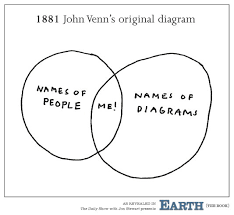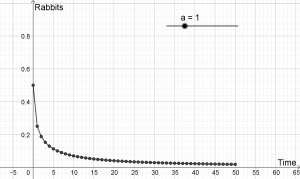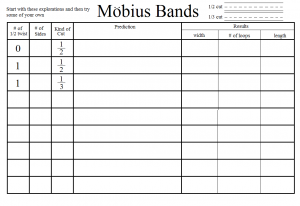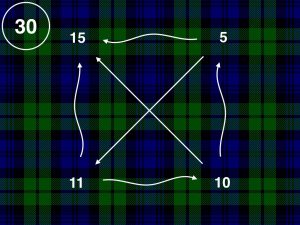
The aim of this puzzle is to switch the red frogs with the blue frogs according to the following rules:
- The left set of frogs can only move right, the right set of frogs can only move left.
- Frogs can move forward one space, or move two spaces by jumping over another counter.
- The puzzle is solved when the two sets of frogs have switched positions.
How many moves does this puzzle take?
How about if we change the number of frogs? Can you find a rule for the number of moves it will take based on how many frogs there are?
NRich has an applet with nice graphics here, but you are allowed to go backwards in their version, so it is is best to use this one to help you count the moves.
For interested facilitators extra notes and the solutions are here.







